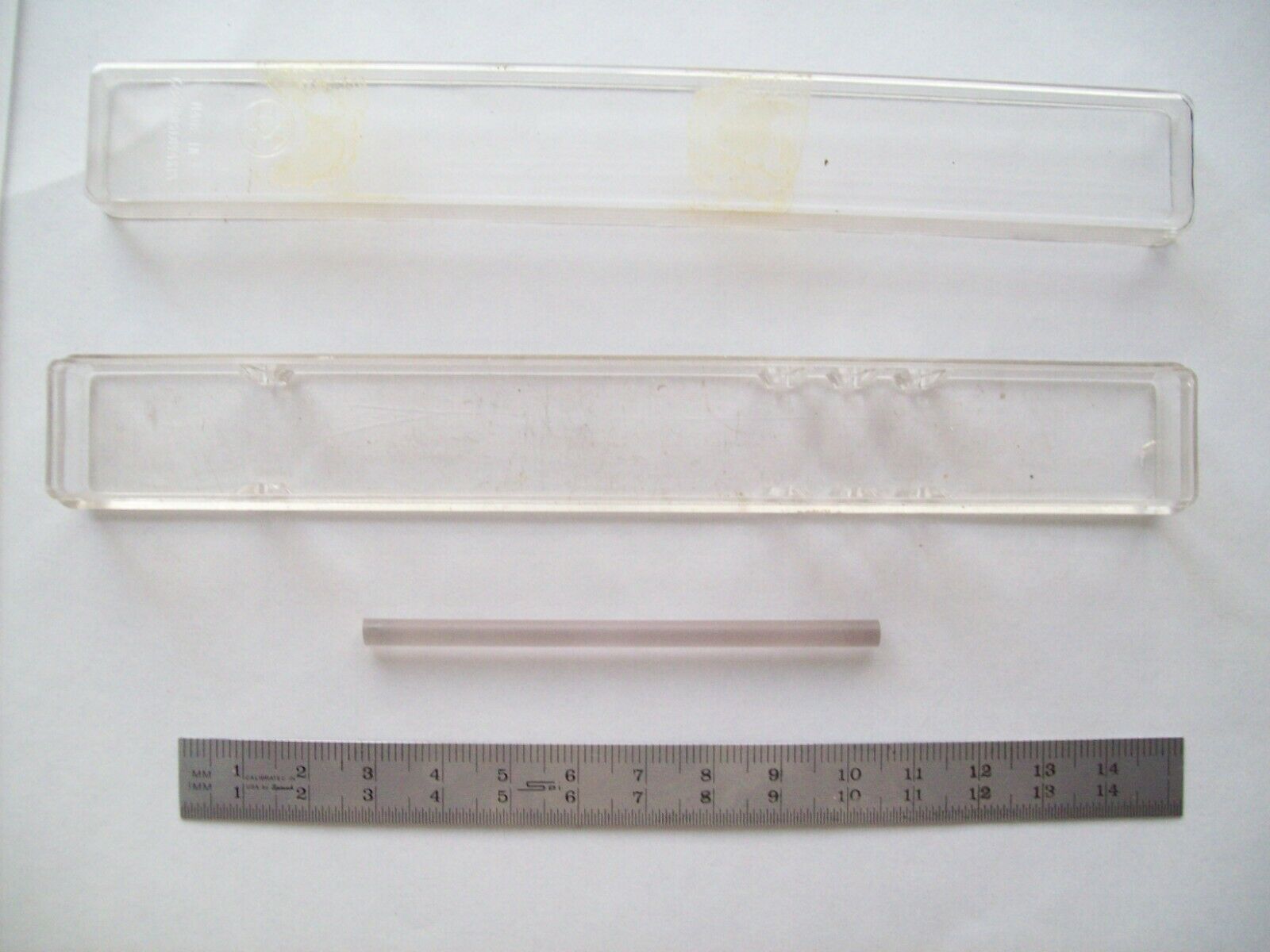-40%
Pair of 00 cut KDP rods (.25"x.25"x1.0") for Pockels effect, new, made in USA
$ 22.7
- Description
- Size Guide
Description
For sale is a pair of rectangular rods cut along the optical axis (00
cut) from a single crystal of KDP (potassium, or kalium dihydrogen phosphate, KH
2
PO
4
) grown from aqueous solution. Notice the black dot representing the input/exit of the optical axis from the rod. The rods are not optically polished, in the same original condition they were ordered and received, around 1975. They were never taken out of their plastic envelopes, illustrated in the picture. The rods were manufactured in USA, by the company formerly named Crystalab, then Lasermetrics, now named Fastpulse Technology.
The size of each rod is 0.25" x 0.25" (transverse) x 1.0" (length along the laser beam axis), or cca. 6.4 mm x 6.4 mm x 25.4 mm. The relatively large transverse size makes them usable with a large (expanded) laser beam.
By polishing them across the two opposite faces perpendicular to the optical axis, and by applying an electric field along the optical axis (either by having transparent electrodes or by ring-like electrodes, see the appropriate literature), a laser beam travelling along the optical axis will display the Pockels effect, or the linear electro-optical effect (see the literature). These KDP rods can be used in educational experiments to demonstrate the Pockels effect, the electro-optical modulation of a light (laser) beam, or an electro-optical light switch. Interested people can read the basic theory and principles of the Pockels effect and the devices based on it at http://www.fastpulse.com/technical_notes.php. These rods have also a historical value for early attempts to constructing electro-optical devices and can be considered as collectible items.









